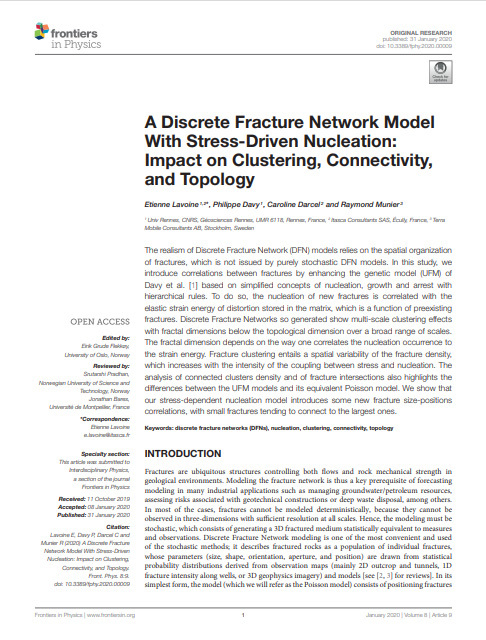Su privacidad es importante para ITASCA. Utilizamos cookies necesarias para garantizar el correcto funcionamiento de nuestro sitio, junto con cookies de rendimiento para ayudarnos a comprender cómo se utiliza a través de los datos agregados de los visitantes. Puede habilitar o deshabilitar todas las cookies de rendimiento en las preferencias a continuación y actualizar su elección en cualquier momento. Tenga en cuenta que si habilita y deshabilita estas cookies, cesará el monitoreo a través de Google Analytics, pero las cookies en sí pueden permanecer hasta que caduquen o usted las elimine, ya que ITASCA no puede eliminar las cookies de terceros.
Además, cuando ve videos de YouTube incrustados en nuestro sitio, Google puede solicitarle que inicie sesión, lo que puede resultar en la colocación de múltiples cookies seguras (cookies de preferencia, seguimiento y marketing relacionadas con Google). Para obtener más detalles, consulte la Sección 3 de la Política de cookies de ITASCA .
Necesario (Obligatorio)
Cookies sin las que el sitio no puede funcionar correctamente. Esto incluye cookies para acceder a áreas seguras y seguridad CSRF. Tenga en cuenta que las cookies predeterminadas de Craft no recopilan ninguna información personal o confidencial. Las cookies predeterminadas de Craft no recopilan direcciones IP. La información que almacenan no se envía a Pixel & Tonic ni a terceros.
Nombre : CraftSessionId
Descripción : Ayuda a administrar las sesiones de usuario, incluida la autenticación y las operaciones básicas de aplicaciones web. Esta cookie generalmente se establece en respuesta a las acciones del usuario que solicitan servicios, como configurar preferencias, iniciar sesión o completar formularios.
Proveedor : *. itasca.cl
Caducidad : Tan pronto como expire la sesión
Nombre : CRAFT_CSRF_TOKEN
Descripción : Una medida de seguridad diseñada para proteger contra ataques de falsificación de solicitudes entre sitios (CSRF). Funciona asegurando que las solicitudes POST realizadas al servidor vayan acompañadas de un token válido, evitando que los sitios web maliciosos realicen acciones no autorizadas.
Proveedor : *. itasca.cl
Caducidad : Tan pronto como expire la sesión
Nombre : cookie-consent
Descripción : Registra sus preferencias de consentimiento de cookies.
Proveedor : *. itasca.cl
Caducidad : Persistente
Nombre : *_username
Descripción : Almacena la información necesaria para mantener una sesión segura y autenticada y solo existirá mientras el usuario esté autenticado en Craft. Inicio de sesión en el sitio web solo para el personal de ITASCA y los invitados autorizados. No está destinado al uso público en general.
Proveedor : *. itasca.cl
Caducidad : Persistente
Nombre : *_identity
Descripción : Almacena la información necesaria para mantener una sesión segura y autenticada y solo existirá mientras el usuario esté autenticado en Craft. Inicio de sesión en el sitio web solo para el personal de ITASCA y los invitados autorizados. No está destinado al uso público en general.
Proveedor : *. itasca.cl
Caducidad : Tan pronto como expire la sesión
Nombre : _gsas
Descripción : Relacionado con la herramienta de búsqueda de Google incrustada. Se utiliza para mostrar anuncios personalizados dentro de la red publicitaria de Google, basados en el comportamiento de navegación seudonimizado recopilado a través de los servicios de Google.
Proveedor : *. itasca.cl
Caducidad : 3 meses
Nombre : _GRECAPTCHA
Descripción : Proporcionar protección contra spam ITASCA para envíos de formularios web.
Proveedor : *. itasca.cl
Caducidad : 6 meses
Rendimiento
Las cookies de rendimiento, también conocidas como cookies analíticas, son un tipo de cookie que recopila datos sobre cómo los visitantes usan un sitio web. Estos datos incluyen información como visitas a la página, tiempo dedicado a las páginas, tasas de rebote y cómo los usuarios navegan por el sitio. Esta información se utiliza para analizar el rendimiento del sitio web y mejorar la experiencia del usuario.
Nombre : _ga
Descripción : Una cookie de seguimiento utilizada por Google Analytics para distinguir usuarios únicos y rastrear su actividad en un sitio web. Ayuda a los propietarios de sitios web a comprender cómo los usuarios interactúan con su sitio, mejorando la experiencia del usuario y el rendimiento del sitio web.
Proveedor : .google.com
Caducidad : 2 años
Nombre : _ga_*
Descripción : Un tipo de cookie de Google Analytics 4 (GA4). Esta cookie ayuda a rastrear el comportamiento único del usuario dentro de una sesión específica en el sitio web a través de múltiples sesiones y visitas.
Proveedor : .google.com
Caducidad : 2 años
Nombre : _gat
Descripción : Una cookie de Google Analytics utilizada para acelerar las tasas de solicitud. Ayuda a administrar el volumen de datos enviados a Google Analytics, particularmente en sitios web con alto tráfico. Esta limitación evita la sobrecarga del sistema y garantiza un procesamiento eficiente de los datos.
Proveedor : .google.com
Caducidad : 1 minuto
Nombre : _gid
Descripción : Una cookie de Google Analytics para distinguir usuarios únicos y rastrear su comportamiento en un sitio web, principalmente para análisis basados en sesiones. Asigna un ID único a cada usuario y, por lo general, está configurado para caducar después de 24 horas o cuando se cierra el navegador.
Proveedor : .google.com
Caducidad : 24 horas
Seguro (Obligatorio)
Las cookies seguras se crean en el sitio web si ha iniciado sesión o elige iniciar sesión en su cuenta de Google y elige ver un video de YouTube incrustado o un servicio de Google disponible de manera similar en el sitio web. Se trata de cookies de terceros sobre las que ITASCA no tiene control.
Nombre : NID
Descripción : Google lo utiliza para almacenar las preferencias de los usuarios y la información de los usuarios que no han iniciado sesión, como la configuración de idioma, las preferencias de los resultados de búsqueda y la configuración de Búsqueda Segura. Asigna un ID único al navegador de un usuario, lo que permite a Google personalizar la experiencia del usuario y proporcionar datos publicitarios relevantes a las empresas que utilizan Google Ads.
Proveedor : .google.com
Caducidad : 6 meses
Nombre : HSID
Descripción : Esta cookie es una medida de seguridad utilizada por Google para autenticar a los usuarios y proteger sus datos. Almacena registros cifrados y firmados digitalmente del ID de la cuenta de Google de un usuario y la marca de tiempo de su inicio de sesión más reciente. Esta cookie funciona junto con la cookie SID para verificar la identidad del usuario y evitar el acceso no autorizado a los servicios de Google.
Proveedor : .google.com
Caducidad : 2 años
Nombre : SAPISID
Descripción : Una cookie de seguridad que se utiliza para almacenar las preferencias del usuario y habilitar funciones personalizadas en los servicios de Google, incluida la publicidad. SAPISID almacena las preferencias del usuario, como la configuración de idioma, el número de resultados de búsqueda que se mostrarán y si el filtro Búsqueda Segura está habilitado.
Proveedor : .google.com
Caducidad : 2 años
Nombre : SID
Descripción : Una cookie de seguridad utilizada por Google para identificar la cuenta de Google de un usuario y su hora de inicio de sesión más reciente. Se combina con otras cookies como HSID para ayudar a proteger contra ataques como la falsificación de solicitudes entre sitios, lo que garantiza que las solicitudes dentro de una sesión de navegación sean realizadas por el usuario y no por sitios maliciosos de terceros.
Proveedor : .google.com
Caducidad : 2 años
Nombre : SIDCC
Descripción : La función principal de SIDCC es actuar como medida de seguridad, garantizando la protección de los datos de los usuarios en los sitios y servicios de Google. Google usa SIDCC para identificar el tráfico web confiable, lo que ayuda a distinguir la actividad legítima del usuario de los intentos potencialmente maliciosos de acceder a cuentas o datos.
Proveedor : .google.com
Caducidad : Hasta 1 año
Nombre : SSID
Descripción : Se utiliza principalmente para la seguridad y la personalización en relación con los videos de YouTube y los servicios de publicidad de Google. La cookie SSID se establece cuando un usuario interactúa con un reproductor de video de YouTube. Es una galleta de larga duración, con un tiempo de caducidad típico de dos años. Si bien se usa para la personalización, también juega un papel en la prevención del fraude y garantiza una experiencia de navegación segura. Los usuarios pueden administrar su configuración de cookies en su navegador para controlar cómo Google usa esta cookie y otras.
Proveedor : .google.com
Caducidad : 2 años
Nombre : APISID
Descripción : Una cookie de seguridad utilizada por Google, particularmente en relación con YouTube y otros servicios. Desempeña un papel en la personalización de los anuncios al recopilar información del usuario en función de búsquedas e interacciones recientes. Esto permite a Google mostrar anuncios dirigidos que son más relevantes para los intereses de un usuario.
Proveedor : .google.com
Caducidad : 6 meses
Nombre : __Secure-1PAPISID
Descripción : Una cookie segura y persistente utilizada por Google para almacenar información sobre sus interacciones con los servicios y anuncios de Google (incluidos Google Search y YouTube).
Proveedor : .google.com
Caducidad : 2 años
Nombre : __Secure-1PSID
Descripción : Se utiliza con fines de orientación, específicamente para crear un perfil de los intereses de los visitantes del sitio web para mostrar publicidad relevante y personalizada de Google. Se coloca en todas las páginas de un sitio web que utiliza los servicios de Google, incluidos los propios sitios de Google, y se utiliza independientemente de si ha iniciado sesión en su cuenta de Google.
Proveedor : .google.com
Caducidad : Hasta 2 años
Nombre : __Secure-1PSIDCC
Descripción : Se utiliza con fines de orientación, específicamente para crear un perfil de los intereses de los visitantes del sitio web para mostrar publicidad relevante y personalizada de Google. Es una cookie propia, lo que significa que Google la establece directamente cuando visita las propiedades de Google o los sitios que utilizan los servicios de Google. Esta cookie ayuda a Google a adaptar los anuncios a sus preferencias en función de su actividad de navegación. Se coloca en todas las páginas de un sitio web que utiliza los servicios de Google, incluidos los propios sitios de Google, y se utiliza independientemente de si ha iniciado sesión en su cuenta de Google.
Proveedor : .google.com
Caducidad : 12 meses
Nombre : __Secure-1PSIDTS
Descripción : Se utiliza principalmente para la orientación y la publicidad personalizada. Ayuda a Google a crear un perfil de los intereses de un visitante del sitio web, lo que le permite mostrar anuncios relevantes basados en esos intereses. Esta cookie es establecida por Google y se coloca en las páginas donde están presentes los servicios o la publicidad de Google.
Proveedor : .google.com
Caducidad : 6 meses
Nombre : __Secure-3PAPISID
Descripción : Cookie de terceros utilizada por Google para rastrear a los usuarios y crear un perfil de sus intereses de navegación, principalmente con el fin de ofrecer publicidad personalizada y relevante. Se considera una cookie de seguimiento porque sigue a los usuarios a través de diferentes sitios web.
Proveedor : .google.com
Caducidad : 2 años
Nombre : __Secure-3PSID
Descripción : Cookie de terceros establecida por Google y que se utiliza para rastrear a los usuarios en diferentes sitios web con fines publicitarios.
Proveedor : .google.com
Caducidad : 2 años
Nombre : __Secure-3PSIDCC
Descripción : Una cookie de seguridad y autenticación utilizada por Google, principalmente para el retargeting y la personalización de anuncios. Ayuda a crear un perfil de los intereses de los visitantes del sitio web para mostrar anuncios más relevantes. También se utiliza con fines de seguridad, incluida la protección de los datos de los usuarios y la prevención del fraude.
Proveedor : .google.com
Caducidad : 1 año
Nombre : __Secure-3PSIDTS
Descripción : Se utiliza para recopilar información sobre las interacciones de los usuarios con los servicios y anuncios de Google, incluidos sitios web y aplicaciones, para personalizar los anuncios y medir la eficacia de la publicidad. Es un identificador único que ayuda a Google a crear un perfil de los intereses de los usuarios para la publicidad dirigida.
Proveedor : .google.com
Caducidad : 1 año

